 A Message from the Director
Happy
New Year to all subscribers of the Baltimore City Planning Department’s Compass
Newsletter and a special welcome to new subscribers, and those seeing our
newsletter for the first time. I hope all of you will become Compass
regulars!
This
special edition features highlights from the year just closed. In terms
of planning and development, you’ll see that 2013 was a very busy one for us,
due in part to the welcome return of a robust development market for multi-family
housing in many spots around the City. We are truly on the path of
progress towards meeting the Mayor’s goal of adding 10,000 new households to
the city, while we continue the important work of improving the quality of life
for all of our existing residents.
We’ve
also achieved further milestones with the TransForm Baltimore zoning re-write
legislation, with the completion of the Planning Commission recommendations on
the legislation, as well as the initial City Council hearing process.
Planning has also launched a new master plan effort for a wide swath of South
Baltimore. Implementation will be driven by Local Impact Aid from the new
Horseshoe Casino operations (scheduled to open Fall 2014) for decades to come.
I hope you enjoy this “year in review”, and we
look forward to your involvement in helping the Department achieve even more in
the coming year.
|
Sincerely,
Thomas J. Stosur
The
Land Use and Urban Design Division (LUUD) serves as the staff for the Planning
Commission and the Urban Design and Architectural Review Panel. In addition,
the Division reviews all major construction and renovation projects to ensure
that they meet high development standards and are appropriate to their
surroundings. The following is a review
of some of the major projects they reviewed and added design value to in 2013.
Horseshoe Casino
The Baltimore
Horseshoe Casino is currently under construction on Russell Street, including its
4,000 space parking garage on Warner Street.
The Department of Planning assisted this project through an extensive
design review process. The Site Plan
Review Committee reviewed the site layout to ensure safety and efficiency of
traffic movement and special Site considerations given its location within the Chesapeake
Bay Critical Area.
 The
Urban Design and Architecture Review Panel (UDARP) also worked with the
development team to create what will become a dynamic gateway building for
visitors arriving in Baltimore from I-295.
The project was ultimately
presented to the Planning Commission for its review and final design approval.
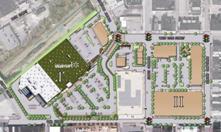
25th
Street Station PUD
The
25th Street Station project is a mixed-use Planned Unit Development (PUD) with
a variety of proposed residential and commercial development, including a
Walmart, mid-sized retailers, and smaller, neighborhood commercial
spaces. The Department of Planning assisted this project through site
plan review, several architectural reviews, and extensive community outreach
and participation. Charged with creating
a more urban experience with a more traditional retail format, the development team
worked with the Department of Planning and UDARP to create a site plan that
reflected the site’s urban context. As a
result, a better overall project design was achieved.

Harbor
Point PUD Phase I – Exelon, Central Plaza, Parking & Related Roads
In
2013, the previous Planned Unit Development (PUD) for Harbor Point was repealed
and a new PUD and corresponding development plan was approved. The new PUD increases the maximum build-out
of the site to 3.02 million square feet, and is based on a master plan that
underwent extensive design and technical reviews. Phase I of the development will include the
new Baltimore Headquarters for Exelon, along with ground-floor retail fronting
on a central park, 103 apartment units, and structured underground parking.
The
development team, led by Harbor Point Development LLC, worked through the UDARP
design process to create significant urban and pedestrian spaces throughout the
development area. The UDARP Panel worked
with the design team to simplify the central park space design to really serve
as a focal point for the community of buildings that would be forth
coming. The design of the Exelon
building was enhanced to breakdown the large building mass while allowing it to
front the park with a more elegant design.
The Department of Planning also assisted the development team and the
Department of Transportation to better place the project into the context of
Harbor Point and the City around it.
|

Chesapeake
Commerce Center - Amazon Distribution Center
The redevelopment of the former GM plant site continues
with the construction of a one million square foot distribution center on
Broening Highway for Amazon.com. The remainder of the site is also being redeveloped
for other industrial, warehousing and distribution uses. The new Amazon Distribution Center will
provide more than 1,000 jobs.
Recognizing the time-sensitive nature of this project, the Department of
Planning helped get this project through an accelerated site plan review
process, and coordinated necessary reviews by other agencies.
|
The Rotunda
The
redevelopment of the Rotunda will result in a multi-family, mixed use community
with a new 5-7 story residential building adjacent to the existing building,
and a three to four-story apartment building along West 38th Street
and Elm Avenue.
In
addition, the first floor of the existing Rotunda building will be completely
renovated with outward-facing retail. When
complete, the project will include 383 residential units, 1,100 parking spaces
(garage and surface) and 84,391 sq. ft. of retail. A new 12,060 sq. ft. central plaza is also
proposed.
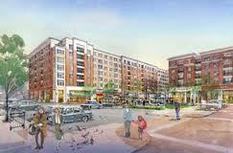
In
its reviews of the project, Planning and UDARP challenged the design team to design
the new buildings in a way that transitions well toward the adjoining
communities. The result is a successful
stepping down of building forms with a blend of traditional and contemporary
architecture. In addition, the
pedestrian environment compliments the well-established feel of existing
streets. A new “central green” adds to
the appeal.

Marketplace at Fells Point
The
Marketplace at Fells Point Planned Unit Development (PUD), established in 2007,
proposes the renovation of the Broadway Markets; the renovation and redevelopment
of retail, office and residential on the adjacent blocks; and enhancing the
open space in the 800 block of South Broadway.
This project has been guided by input from the Historic and
Architectural Preservation staff within the Department of Planning to ensure
compatibility with the surrounding district.
Construction
of the buildings on the east and west sides of Broadway is currently
underway. The South Market has already
been renovated, and renovation of the North Market is also underway. Improvements to the pedestrian square are expected
to begin soon. In 2013, the development
team requested a minor amendment to remove the parking lot adjacent to the
North Market and replace it with a landscaped plaza and street trees. Additionally, the developer proposed the
construction of a new 5,044 square foot South Market on the site of the existing
parking lot. Not only does this project
work towards the City’s goal of attracting 10,000 new families, it also
protects and enhances one of Baltimore’s premier historic neighborhoods.
|

Whitehall Cotton Mill PUD
The
Whitehall Cotton Mill redevelopment project is the site of an historic mill
building that was later used as a warehouse.
The renovation and rehabilitation of the mill will benefit from the use
of historic tax credits, and convert the building to a mixed-use retail and
residential building.
The
intention is to preserve this historic structure, as has been successfully done
with other historic mills in the Jones Falls valley, and was therefore reviewed
by Historic and Architectural Preservation staff within the Department of
Planning.
One
of the challenges of this site is its location in the flood plain and flood way
of the Jones Falls River. Consequently,
the Department of Planning provided additional floodplain-specific review and assistance
by coordinating reviews by other agencies for life safety purposes. The result is the preservation of an historic
building, while providing for its safe re-use.
|
COMPREHENSIVE
PLANNING
The Comprehensive Planning division manages community planning efforts,
urban renewal plans and coordination of plan implementation. Working closely
with citizens, neighborhood organizations, community based non-profits and
other City agencies, the Comprehensive Planning Division helps provide the City
with realistic plans that can be successfully implemented. The Comprehensive Planning Division also
manages the development of the City’s Capital Improvement Program, which
targets infrastructure dollars in support of our community and economic
development goals.

East Baltimore
Leadership Academy
Over the course of 3 days in late
April and early May, approximately 150 East Baltimore
community members joined Citizen’s Planning & Housing Association (CPHA)
and the Department of Planning for an exciting and dynamic capacity-building
workshop. The goal of the workshop was to equip residents with essential
leadership, community engagement, and urban planning knowledge that they could
then use to strengthen their communities.

Mount
Vernon Master Plan
On December 19, 2013, the Planning
Commission approved the Mount Vernon Master Plan. Mount
Vernon is a vibrant mixed-use neighborhood just north of downtown and one of Baltimore’s
most prominent historic districts. The plan area has a wide variety of
development types, including a mix a historic structures and new construction,
including residential, institutional and light commercial uses.
This plan seeks to enhance the
experiences of residents, property-owners, institutions,
businesses, employees and visitors of Mount Vernon through streamlining the
development review process, improving the open space network, and balancing a
range of transportation modes.
|

When
the Horseshoe Casino opens in 2014, millions of dollars a year will flow to the
City to be spent in the neighborhoods immediately surrounding the site. To prepare for these investments, the
Planning Department launched a long-range planning process to help set the
vision and priorities for how these funds will be deployed over the coming
years. To date, several hundred people have participated in four public
meetings. The planning will continue in 2014 and culminate in an adopted
master plan this summer. The planning is being done in consultation with
the Local
Development Council, a body established in State law to monitor and
make recommendations about spending priorities.
|
Local Impact Aid Spending Plans
The
Planning Department has worked with the communities and Local Development
Councils around Pimlico Racetrack and the new Horseshoe Casino to develop
spending plans for gaming revenue that is allocated to these areas in the form
of Local Impact Aid. The approved FY13/FY 14
Pimlico Local Impact Aid Spending Plan and the draft FY15
Pimlico Local Impact Aid Spending Plan were reviewed by Pimlico Community Development
Authority and the draft FY 15
Casino Area Local Impact Aid Spending Plan was reviewed by the Casino Local Development Council.
RESEARCH AND STRATEGIC PLANNING
The
Research and Strategic Planning (RSP) Division provides information, research,
and analysis that guides the City’s planning related policies and
activities. The Division provides City
agencies and the Mayor’s Office with data analysis, research reports and
funding opportunities for programs like housing, community development,
transportation, the natural environment, the economy, real estate and public
health. The Division works with information and mapping technologies, such as Geographic Information
Systems or GIS, to help inform elected officials, developers, planners and
communities of the impact and status of development in the City. RSP staff also
participates in cooperative forecasting activities at the Baltimore Metropolitan
Council and plays a key role in the analysis of periodic data releases from the
U.S. Census Bureau on citywide, community and neighborhood levels.
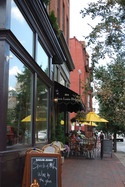
Economic Development Strategic
Planning
In
2013, the Planning Department formalized a partnership with the Baltimore
Development Corporation (BDC) to combine the City’s Comprehensive Economic
Development Strategy (CEDS) with BDC’s strategic plan to create a more in-depth
Strategic Plan for Economic Development.
With the help of a grant from the U.S. Department of Commerce’s Economic
Development Agency (EDA) and internal funding, a consultant was brought on
board and the public planning process launched in November. This process commenced with a series of focus
groups, stakeholder interviews, community forums and an online survey for both
businesses and residents. Completion is
targeted for summer 2014. For more
information, please visit the project webpage at www.baltimore2020.com.
|
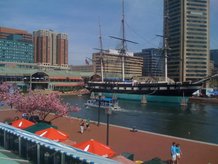
Inner Harbor 2.0
The
Department of Planning partnered with the Waterfront Partnership and a
consultant team led by Ayers Saint Gross to develop a new vision for
Baltimore’s world class inner harbor, Inner Harbor 2.0. As part of that effort, the Research and Strategic
Planning division designed and implemented a community survey that helped
inform the plan’s vision and develop recommendations for improving the Inner
Harbor, making it even more attractive to both residents and tourists. For more information please visit the Inner
Harbor 2.0 website.
The Opportunity Collaborative
The
Research and Strategic Planning division represents the City in a number of
regional planning initiatives, which included active participation in the
Opportunity Collaborative throughout 2013.
Planning will continue to play a key role in the ongoing work of the
Opportunity Collaborative, a 25 member consortium
charged with developing Baltimore’s Regional Plan for Sustainable Development
(RPSD).
 Over the course of the
next three years, the Collaborative will develop a plan that links our region’s
housing, transportation and workforce development plans and investments with
specific focus on reducing regional disparities. Government, philanthropic and
private sector partners are working together with community members to develop
a practical plan to connect all of our citizens to a prosperous and sustainable
future. The process will include extensive community education and engagement,
citizen leadership development, real world demonstration projects and the
writing of regional housing and workforce development plans. For additional information please visit the Opportunity Collaborative website.
 Sustainable Communities and Plan
Maryland Designations
As
a result of the Maryland Sustainable Communities Act and Plan Maryland, the
Department of Planning was required to submit applications for designation of
smart growth areas within the City of Baltimore’s Priority Funding Area. RSP staff prepared a strategy to support each
submission and forwarded them to the Maryland Department of Planning and
Department of Housing and Community Development where they were reviewed and
approved. As a result, the City of
Baltimore was one of the first municipalities to complete the process of
designating Growth and Revitalization Areas, Established Community Areas, and
an amended Sustainable Communities boundary.
In 2014, the process will continue with the designation of
environmentally sensitive areas and climate change impact areas in accordance
with Plan Maryland as a result of the recently passed DP3 plan (see above). For more information please visit our website. |
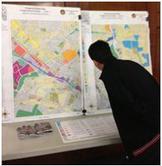 In 2013, the Planning
Commission held over seven hearings on City Council Bill 12-0152, Transform
Baltimore The Zoning Code Rewrite. The initial report of the Planning
Commission was sent to the City Council in March 2013 with some additional
study items. Staff reviewed the remaining items recommended modifications
and a final report was sent to the City Council in September 2013.
The City Council
completed their initial hearings in the Fall 2013. Very few issues were
brought up by citizens, businesses or property owners.
We look forward to
working with the City Council in 2014 in work sessions to finalize the new
code.
|
The
Division of Sustainability and Environmental Planning is the home of Baltimore’s
Office of Sustainability, which staffs the Commission on Sustainability. The Division is also home to Baltimore’s Food
Policy Initiative. The Sustainability
Office and Commission are in the forefront of promoting the City’s Green agenda. Here’s a review of some of their notable 2013
accomplishments.

Disaster Preparedness Project and Plan (DP3)
Baltimore’s
Disaster Preparedness Project and Plan (DP3), adopted by the Planning
Commission on October 3, 2013, propels our city to the forefront of
sustainability, preparedness, and resiliency. The DP3 addresses existing
hazards while simultaneously preparing for impacts caused by climate change.
Records
show that natural hazards are growing in severity and frequency. In the past
decade, we have seen entire cities submerged by hurricanes like Katrina and
Sandy—and Baltimore is not immune. A
year ago, Hurricane Sandy caused severe flooding in Fells Point and Inner
Harbor. Just months earlier, Baltimore suffered power outages, building damage,
and citizen injury during a massive heat wave and the resulting derecho.
Baltimore City has taken a proactive approach to dealing with these impacts.

Through
its six goals, 50 strategies, and 231 actions, the DP3 offers a comprehensive,
forward-thinking plan that provides clear guidance to Baltimore’s government,
partners, and citizens. The plan integrates hazard mitigation with climate
adaptation efforts to help Baltimore minimize vulnerabilities, reduce the loss
of life and damage, upgrade infrastructure, and increase overall resiliency.
The
extensive process to develop the DP3 included technical information provided by
an Advisory Committee, and information discovered during a risk assessment
(hazard identification, vulnerability assessment, and impacts analysis). The
innovative nature of this process and plan serves as a model for other
municipalities nationwide.
For more information, please visit the DP3 website.
|

CREATES
- Creating an Energy Efficient Baltimore
Baltimore City was recently awarded funding through the Maryland
Public Service Commission’s Customer Investment Fund for energy efficiency
programming. This new funding expands and streamlines existing energy
conservation programs, education and outreach, residential energy savings
equipment installation, as well as energy and weatherization assistance.
In addition, trees will be planted and cool roofs will be
installed in targeted neighborhoods, both of which reduce hot summer
temperatures. Baltimore City will also use
these new resources to preserve home ownership, promote economic development,
reduce health costs and provide long-term savings, while supporting a strong,
stable and growing future for Baltimore.
|
Baltimore Energy Challenge
The Baltimore Office of Sustainability's flagship program, the
Baltimore Energy Challenge (BEC), is a critical component of the CREATES
program. BEC is a public private partnership between the City of Baltimore, the
Baltimore Community Foundation, and Civic Works. BEC is the City’s energy
conservation resource program that teaches residents, businesses, and
nonprofits low- to no-cost ways to save energy through grassroots’ efforts in
neighborhoods, businesses, and schools.
 As part of the program, participants sign a pledge committing to
reduce their energy use through changes in behavior. Consistent energy saving
behavior, along with energy saving products, have helped communities reduce
their energy usage by as much as 13%. With additional funding and programming
through CREATES, BEC will reach over 30,000 households, as well as hundreds of
businesses over the next three years, continuing to assist and motivate energy
savings.
For more information, please visit the BEC website.
Green, Healthy, Smart Challenge for Schools
The
first goal of the Baltimore Sustainability Plan under Education & Awareness
is to “Turn every school in Baltimore into a green school,” and the Baltimore
Office of Sustainability has been focusing on this goal since it began. In
2013, we saw our greatest success yet, as the number of city public schools
designated as “Maryland Green Schools” by the Maryland Association for
Environmental & Outdoor Education leaped from 16 to 21, an increase of more
than 30%.

Since
2010, the Baltimore Office of Sustainability has run the Green, Healthy, Smart
Challenge program, offering $1,000 grants to “Green Teams” of student leaders
at Baltimore City public schools for environmental projects. The program
awarded 64 grants in three categories in 2013, and has reached 90 individual
city schools since its inception.
In
spring 2013, we asked student leaders from all corners of the city to tell us
about their work in their own words, resulting in a powerful 10-minute video
called “Green Teams Speak Out” . A group
of dedicated young people helped plan our end of the year celebration,
GreenScape 2013: A Green Schools Summit. Check out footage from GreenScape here.
|
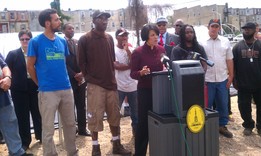 Homegrown Baltimore
The
Baltimore Sustainability Plan’s Greening Goal #2 calls for us to “Establish
Baltimore as a Leader in Sustainable, Local Food Systems”, with urban
agriculture as a key part of this vision. In June 2013, Mayor Stephanie
Rawlings-Blake launched Homegrown
Baltimore: Grow Local, Buy Local, Eat Local, the City’s initiative to
support the growing, distribution, and consumption of locally produced foods.
The launch was announced at the ribbon-cutting for Strength to Love Farm, a
brand new 1.5 acre urban farm on city-owned land in West Baltimore’s
Sandtown-Winchester neighborhood.
In
November 2013, the City made another big step forward for urban farming by
adopting “Homegrown Baltimore: Grow Local”, Baltimore’s first ever urban
agriculture plan. This 67-page plan is a comprehensive look at Baltimore’s
past, present, and future for growing our own food, and offers 25 concrete
recommendations for how to build a robust agriculture movement in our city. In
December 2013, we took yet another step forward by releasing a Pre-Qualification
Application for farmers to apply to lease land from the city, open to all and
with a rolling deadline. For more information please visit our website here.
BALTIMORE FOOD POLICY INITIATIVE
The
Baltimore Food Policy Initiative (BFPI) was established in spring of 2010 and
has been working ever since to increase access to healthy, affordable food in
Baltimore City Food Deserts. The Baltimore BFPI is currently implementing the
10 Food Policy Task Force recommendations and the newly established Food Desert
Retail Strategy to overcome food policy barriers, and build stakeholder
capacity to expand food access in Baltimore City. A few highlights from BFPI’s
work in 2013 are below.

BFPI
has expanded the Get Fresh Get Fit program to increase the availability of
healthy food by working with 38 carryout vendors across the public markets. The
new Get
Fresh Public Markets website includes vendor profiles, information on
healthy eating, and links to social media. BFPI secured a $30,000 grant from
United Way of Central Maryland to launch healthy kid menus and an edible art
program to promote fruits and vegetables in Lexington Market.
Supporting
City Schools in Providing Healthy Foods
In 2013, Lunch Lessons, LLC concluded its
school food assessment for the Baltimore City Public School District, a project
contracted and coordinated by BFPI. The assessment culminated in a strategic
report and recommendations that were presented to City Schools and the project
funders in August. BFPI works with the district to implement these
recommendations, as well as in expanding the number of schools participating in
school breakfast.

Food
Desert Retail Strategy
BFPI
launched and is implementing a food desert retail strategy (FDRS). BFPI has
advocated for food retailer needs as they relate to SNAP on state and federal
levels, as well as provided technical assistance and direct support to small
retailers. BFPI continues to collaborate with the Baltimore Development
Corporation in meeting the needs of independent grocers, and building capacity for a grocery job training program,
along with other community partners.
|
Food
Desert Mapping
BFPI worked with The Reinvestment Fund (TRF)
to support the creation of “drilldown maps” and economic and demographic
analyses to highlight areas for supermarket investment. BFPI continues to work
with Planning’s Research and Strategic Planning staff and Johns Hopkins Center
for a Livable Future on Baltimore
City Food Desert Maps. The newest iteration of the map contains
refined methodology and will be released in March 2014. These maps are used as
policy tools and are used by BFPI and many other city government agencies to
set context and identify target areas for intervention.
COMMISSION ON HISTORIC AND ARCHITECTURAL
PRESERVATION (CHAP)
The
Division of Historical and Architectural Preservation serves as the staff for
the City of Baltimore Commission for Historical and Architectural Preservation
(CHAP), which has helped to preserve our City's historic neighborhoods and
sites since 1964. The CHAP mission is to enhance and promote the culture and
economy of Baltimore through the preservation of buildings, structures, sites
and neighborhoods that have aesthetic, historic and architectural value. CHAP
goals include preserving historic architecture and monuments; promoting
neighborhood revitalization; preventing demolition by neglect; and integrating
our City's past into its future.
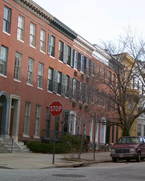
Strengthening
Baltimore’s Communities
It has been a record year for the Commission
and CHAP staff. Most notably, historic district
permit activity was the second highest annual total on record, with 667 Notice
to Proceed permits approved and issued within 33 locally designated historic
districts as of December 26, 2013.
In addition, the Commission approved a variety
of major new projects, including the Washington Monument in Mount Vernon Place;
new construction of an apartment building in Jonestown; Preston Gardens on St.
Paul Place; Fells Point Market Structures, and mixed use new construction on
Charles Street in Mount Vernon. CHAP also conducted a comprehensive review of
the City’s historic preservation ordinance to identify necessary updates and
improvements intended to achieve enhanced clarity and transparency for the
benefit of the public.
|
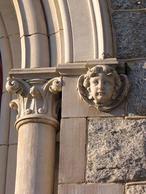
New Historic Designations
In
2013, CHAP approved the National Register designations of the Oak Street
Garage, the Coca-Cola Bottling Company and the Brewers Hill Historic District.
This year, 9 new Baltimore City Landmarks were designated by the Mayor and City
Council, including the historic Frederick Douglas High School, Union Mill,
Trinity AME Church and the Brinks Building.
Six additional Landmark designations are currently underway. The city-wide
Landmark total is now 181 exterior and 2 public interiors. For additional information, please visit our website.
|
 Increasing Investment through the
Historic Restorations and Rehabilitation Tax Credit
In
2013 the City’s Historic
Tax Credit increased investment in Baltimore City. As of 2013, this
successful program has generated approximately $611 million in investment in
City historic properties with a total participation of 3,000 substantial
projects. There are currently over 1,000
restorations valued at approximately $600 million underway throughout the
City’s historic districts. This is significant,
because for every dollar of historic preservation tax credits issued in the
State of Maryland, an additional $6.70 worth of economic activity is generated;
therefore, this local historic tax credit has leveraged an additional $4
billion worth of investment. In 2013 alone, the Preservation staff approved 445
New Applications and 291 Final Certifications, for a total investment of $48,819,054
in 2013.

Conserving “The Monumental City,”
through its Outdoor Sculptures and Memorials
In 2013, the Commission’s Executive
Director administered conservation projects, with special emphasis on
Baltimore’s War of 1812 “Star Spangled Banner” monuments. This included
relocation of the “Lady Baltimore” sculpture to the Maryland Historical Society
and the installation of a reproduction atop the Battle Monument. In addition, the Samuel Smith Monument, the
Armistead Monument, the Berge sculptures at McCulloh Homes, and an additional
20 bronze sculptures and monuments received conservation treatments. For additional information, please visit the CHAP website here.
|
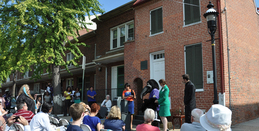 Poe House and Museum
2013 was a milestone year for the Poe House. The historic
dwelling of “EAP” received an extensive facelift, including new exhibits.
The Poe House is now under the stewardship of a brand new non-profit
organization, Poe Baltimore, which re-opened the house for the month of October
to throngs of visitors. Poe Baltimore continues to sponsor events and
raise funds to fulfill its mission of promoting all things Poe, and keeping the
Poe House open and accessible to all fans of Baltimore’s most famous literary
resident. See the Poe Baltimore website at www.poeinbaltimore.org.
21st Century Schools
Construction Program
The Planning Department collaborated closely with the Mayor’s Office,
City Schools and State officials on last year’s House Bill 860, which
authorized the issuance of up to $1.1 billion in bonds to finance approximately
30 new or reconstructed public schools around the City. Following the
passage of legislation, Planning participated with the other key stakeholders
to craft a Memorandum of Understanding that governs the spending of those funds
and stipulates important implementation aspects such as design review and
public access to the buildings for community and recreational purposes.
Planning will also be closely involved with the disposition process for vacated
and surplus school facilities—the 10 year vision calls for 26 school buildings
to be vacated and re-purposed as part of the program. In 2014, Planning
looks forward to initiating a neighborhood planning process around each of the
new and renovated school facilities. For more information, please visit the website, here. |